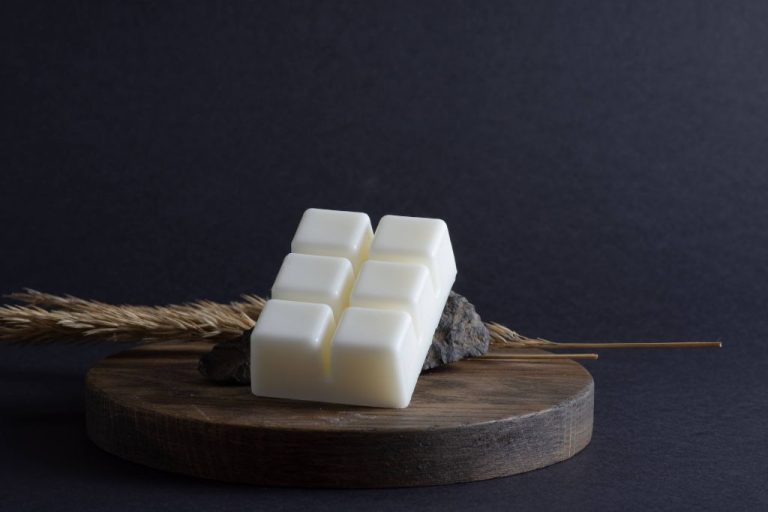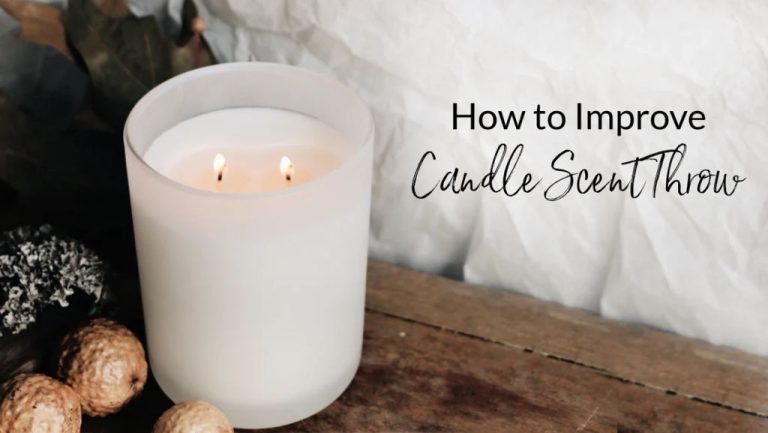How Fast Does A Candle Heat A Room?
Candles have been used as a source of light and heat for thousands of years. In fact, candles were the primary source of lighting in homes prior to the invention of gas lamps and electric lights in the 19th century (https://www.volza.com/imports-india/india-import-data-of-candle-from-japan). While candlelighting has mostly given way to more modern lighting methods, candles can still serve as an effective heat source under certain conditions. Modern candles are primarily paraffin wax, but various other waxes, oils, and fuels have been used historically. When lit, a candle flame can reach temperatures exceeding 1,400°C. This heat is radiated outwards and can help warm small spaces. But just how quickly and effectively can a candle or candles heat up a room? In this article we’ll explore the science behind candle heating and provide data-driven recommendations.
How Candles Produce Heat
Candles produce heat through the process of combustion. When a candle wick is lit by a flame, the heat from the flame melts the nearby wax into a liquid state. The melted wax is then drawn up the wick by capillary action. Once the wax reaches the flame, it vaporizes into a gas. This wax vapor then mixes with oxygen in the air and undergoes combustion, which is an exothermic chemical reaction that releases heat energy.
Specifically, the hydrocarbon molecules in the wax react with the oxygen molecules, breaking apart the hydrocarbon molecules into water vapor and carbon dioxide. Breaking these chemical bonds releases the energy that was stored in them, in the form of light and heat. The majority of heat produced by a burning candle comes from the hot gases produced during combustion, including water vapor and carbon dioxide.
The combustion reaction and release of energy continues as long as there is fuel (melted wax) supplied to the flame. The candle wick regulates the release of melted wax to the flame, acting as a controlled fuel source. This allows the candle to burn steadily.
In summary, candles produce heat through the chemical reaction of combustion, where the molecules in candle wax are broken down and their energy is released in the form of light and heat. The flame provides the activation energy to start and sustain this reaction.
Source: https://firesafeliving.com/can-candles-heat-a-room/
Factors That Impact Candle Heating
There are several key factors that determine how effectively candles can heat a room, including room size, insulation, number and size of candles, and airflow. Smaller, well-insulated rooms will heat up faster with candles than large, drafty ones. More and bigger candles will produce more heat energy. Airflow can help distribute heat but too much draftiness will draw heat out of the room.
According to research from the Royal Society of Chemistry, candle heating power depends heavily on room size. A single candle burning for one hour added 3°C in a 2m x 2.5m x 2.5m room but only 1°C in a 5m x 4m x 3m room [1]. Insulation plays a key role as it prevents heat loss to the outdoors. Well-insulated spaces with minimal air leaks retain heat far better.
The number and size of candles burning affects the total heat output. More and bigger candles produce greater flame intensity and higher temperatures. A study from the National Institute of Standards and Technology found heat release scales linearly with increased wick diameter/candle size [2]. However, extremely large candles increase fire hazards.
Finally, airflow impacts heat distribution. Some circulation helps spread heat but too much draftiness results in heat loss. Candles perform optimally in still indoor air. Any vents, gaps or leaks can reduce efficiency unless minimized. With the right conditions, candles can effectively provide supplemental heating.
Calculating Candle Heating Potential
The amount of heat produced by a candle is measured in British Thermal Units (BTUs). A BTU is a standard unit that represents the amount of energy needed to heat one pound of water by one degree Fahrenheit. According to sources, a single candle produces around 75-85 BTUs of heat energy per hour on average (https://theprepared.com/blog/can-a-flower-pot-and-tealight-candle-create-enough-heat-to-save-you-in-a-cold-emergency/).
To calculate the BTU output of a candle, you can measure the temperature increase of a known quantity of water over a set time as the candle burns. For example, if one pound of water increased in temperature by 1 degree Fahrenheit after burning a candle for one hour, then the candle produced 1 BTU of heat energy that hour. Doing this test with multiple candles and taking the average provides a reasonable estimate of the average BTU output per candle.

Another method is to measure the wattage of the candle. Watts are a measurement of power, with 1 watt equal to 3.41214 BTUs per hour (1 BTU/hr = 0.29307 watt). So a candle producing 85 BTUs/hr would be equivalent to around 25 watts (https://www.instructables.com/measuring-the-energy-out-put-of-a-tea-light/). By measuring the wattage produced, you can calculate the BTU output.
Knowing the BTU rating of a candle helps determine how much heating ability it provides. This allows calculating how many candles are needed to heat a space to a certain temperature. It also allows comparing candle heating capacity to other heat sources.
Comparing Candle Heating to Other Sources
When it comes to heating a space, candles are generally less efficient and effective than most other heating methods. However, candles do have some advantages in certain situations.
Compared to wood stoves, furnaces, and space heaters, candles produce far less heat output. A large 3-wick candle may produce around 80-150 BTUs of heat, whereas a mid-sized space heater provides around 10,000 BTUs. Even a small wood stove can heat an entire room very effectively, while a few candles in the same space would only provide subtle warmth right around the flame (1).
However, candles can be a safer, more convenient option in some cases. They don’t require ventilation like most other heat sources, making them usable in tents or small spaces. Candles are highly portable and run on renewable wax fuel. And unlike furnaces or heaters, candles provide some heat even during a power outage (2).
In emergency situations, the DIY terracotta heater design can concentrate the heat from a candle to provide localized warming. While less efficient than other options overall, this can be a life-saving heat source when no alternatives are available, as long as proper safety precautions are taken (3).
For most everyday heating needs, candles are more of a decorative or supplemental source, adding some warmth and ambiance rather than fully heating a space. But they can be a versatile last-resort option when used carefully.
Sources:
Maximizing Candle Heating Efficiency
There are several tips for maximizing the heating efficiency of candles to warm a room:
Room Insulation – Having proper insulation in walls, ceilings, windows and doors is key for retaining heat from candles. According to the Backpacking Light forum, sealing drafty areas will greatly increase candle heating effectiveness.1
Candle Placement – Spacing candles out around a room provides more efficient combustion due to cleaner air and oxygen available to each flame, as noted on Reddit.2 Grouping candles together can decrease efficiency. Place candles away from drafts and vents.
Candle Type – According to Physics Forums, taller, narrower candles like pillars or tapers allow better airflow and oxygen supply to the flame for increased efficiency.3 Beeswax and soy candles burn cleaner and warmer than paraffin.
Safety Considerations
While candles can provide warmth and ambiance, they also pose some safety hazards that should not be overlooked. Proper precautions need to be taken to minimize the fire and smoke risks associated with burning candles.
One of the biggest dangers with candles is the potential to start an unintended fire. According to the National Fire Protection Association (NFPA), candles cause an estimated 8,000 house fires each year, resulting in around 80 deaths and $374 million in property damage annually (https://www.nfpa.org/News-and-Research/Data-research-and-tools/US-Fire-Problem/Candle-and-home-fires). To reduce fire risks, candles should never be left unattended or near flammable materials like curtains or paper. Proper candle holders that are flame-retardant and won’t tip over should always be used.
Adequate ventilation is also crucial when burning candles to prevent smoke buildup. The National Candle Association recommends allowing 1-2 inches of airspace around burning candles and avoiding drafts or vents that can cause uneven burning (https://candles.org/fire-safety-candles/). Heavy sooting on walls is an indicator that a room needs more ventilation. It’s also advised to extinguish candles before going to sleep or leaving an area.
By taking proper fire safety precautions, the heating benefits of candles can be enjoyed while minimizing the risks of fire and smoke inhalation.
Potential Applications
Candles can provide useful heating in certain situations, such as:
Emergency/Off-Grid Heating
During power outages or in off-grid settings like camping, candles can provide supplemental heat and light. Just a few candles can raise the ambient temperature in a confined space by a few degrees. According to this source, candle warmers are safer and more efficient for emergency heating than burning candles.
Supplemental Zone Heating
Strategically placing candles around a room or in one area can provide a heating boost to cold spots. Warming candles with a candle warmer instead of burning them reduces fire risks. As explained by this source, warming candles makes them last longer too.
Mood/Ambiance
Candles are commonly used to set a mood or ambiance. Their soft, natural light and ability to fill a space with fragrance creates a relaxing environment. Warming candles rather than burning them reduces risks while still allowing candles to scent and light up a room.
Recommendations
Based on the research, there are several key recommendations for optimizing candle heating efficiency and safety:
Use candle warmers instead of burning candles. Candle warmers melt candle wax more efficiently, producing higher amounts of heat and better scent dispersal. The heat is more concentrated and directed upwards rather than being lost into the surrounding air when a candle burns with a flame. Candle warmers also allow candles to last longer since the wax burns slower. Top-down candle warmers that surround the entire candle are ideal. [1]
Allow candles to fully cool between warming sessions. Letting the candle wax completely solidify again helps preserve the candle and prevents wasting wax. Most experts recommend warming a candle for 3-4 hours maximum at a time. [1]
Use large candles designed for heating. The larger the candle and wax pool, the more heat it can emit. Choose candles specifically marketed for heating purposes in large jars or containers. Opt for natural beeswax or soy wax rather than paraffin for cleaner-burning properties. Adding essential oils can also boost fragrance.
Combine candle heating with other sources for maximum effectiveness. Candles alone may not raise a room’s temperature significantly. Use candle warmers along with other heating methods like fireplaces, space heaters, or central heating for optimal warming and energy efficiency.
Follow all safety precautions. Never leave burning candles or warmers unattended. Place on heat-safe surfaces away from flammable items. Ensure proper ventilation and avoid drafts which can disrupt heat flow. Consider a timer switch to automatically turn warmers off after a few hours.
Conclusion
In summary, how fast a candle can heat a room depends on several key factors including the size and ventilation of the space, the number and size of candles used, and environmental conditions like temperature and airflow. Small candles generate between 80-150 BTUs of heat energy per hour, while larger pillar candles can produce 200-400 BTUs per hour. One pound of wax holds around 155,000 BTUs of potential heat energy. To significantly warm a room, multiple large candles are needed, or many small candles used together. But heat output is limited, and candles are generally better for small, contained spaces. Compared to other heating sources, candles produce less intensity and take longer to warm up an environment. However, they can be used safely and effectively for supplemental zone heating and emergency situations when used properly.
The key learnings are that candle heating power is influenced by the candle’s size, wax type, and burn rate. Heat release depends on complete wax melting and airflow. While not a primary heat source, candles can add comfort, ambiance, and extra warmth when strategically placed in a room. With an understanding of their heating limitations, candles can be enjoyed safely and appreciated for their many other perks as well.



